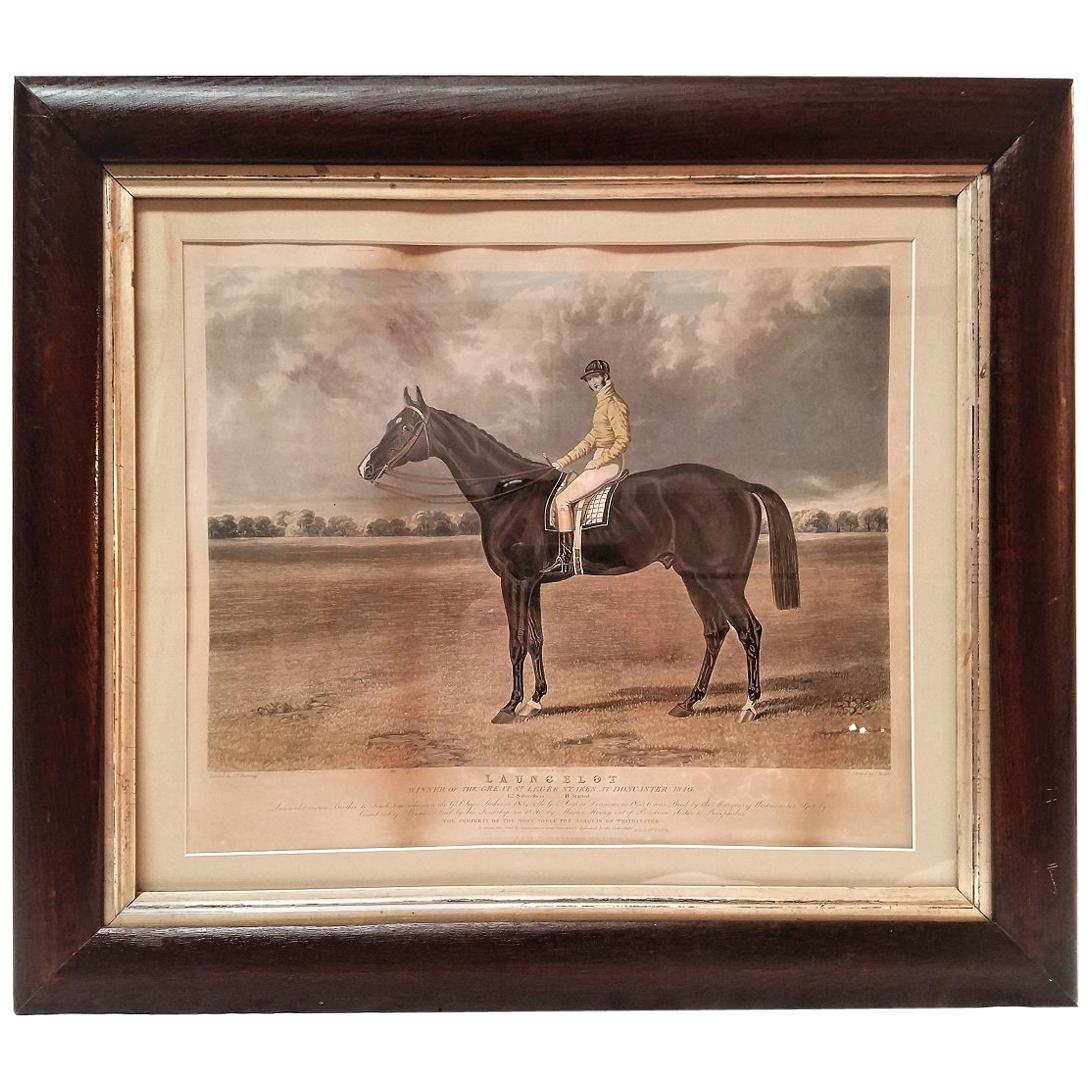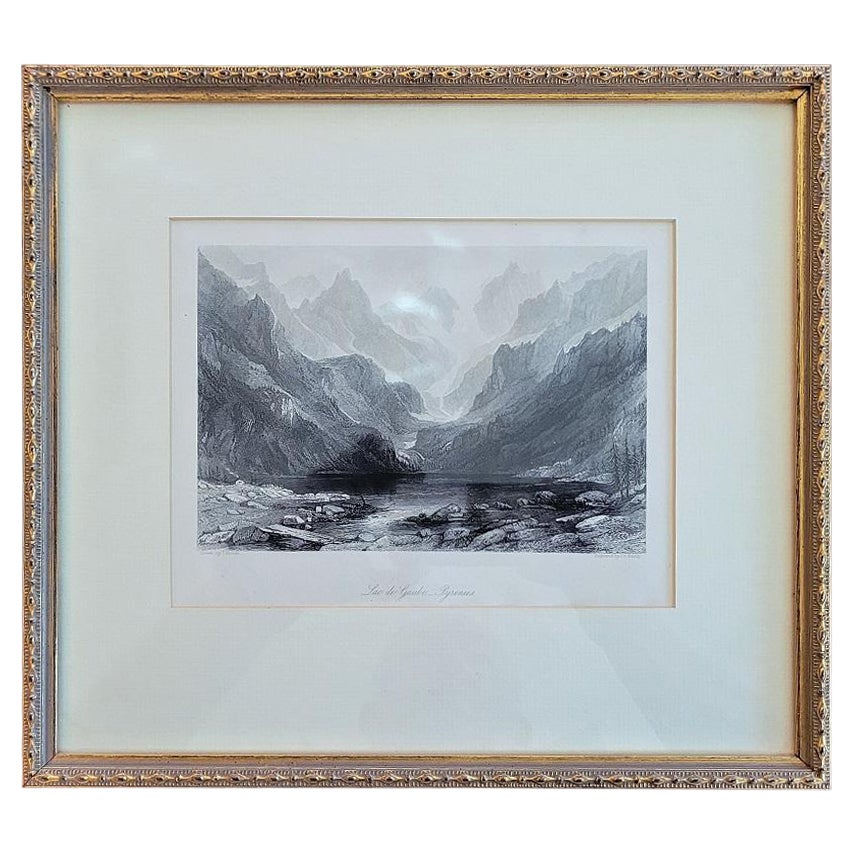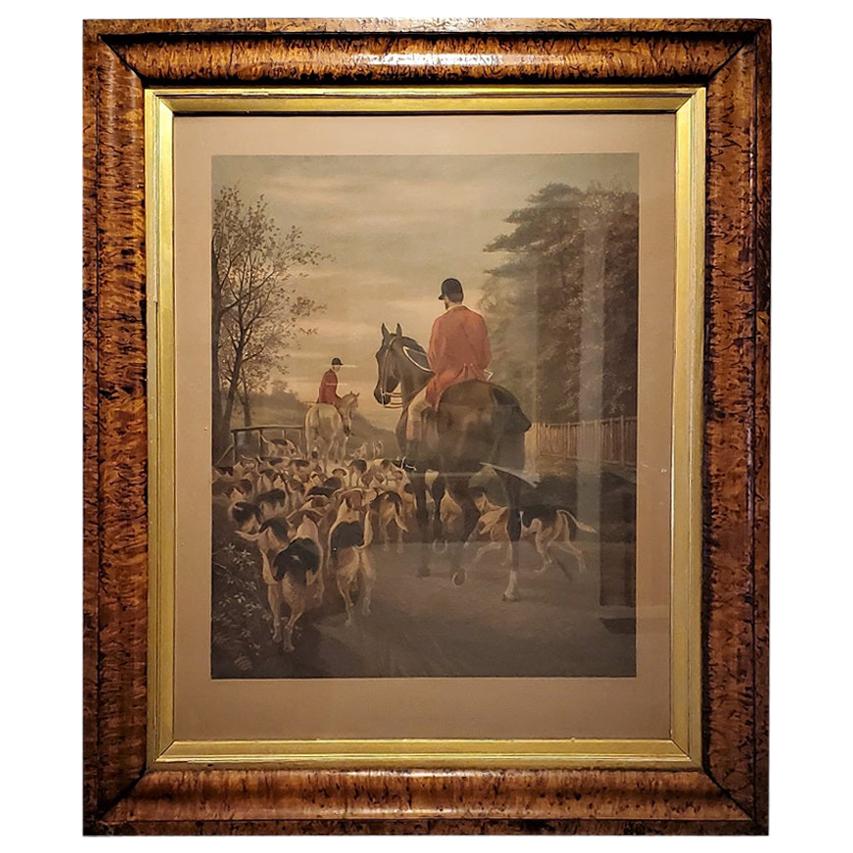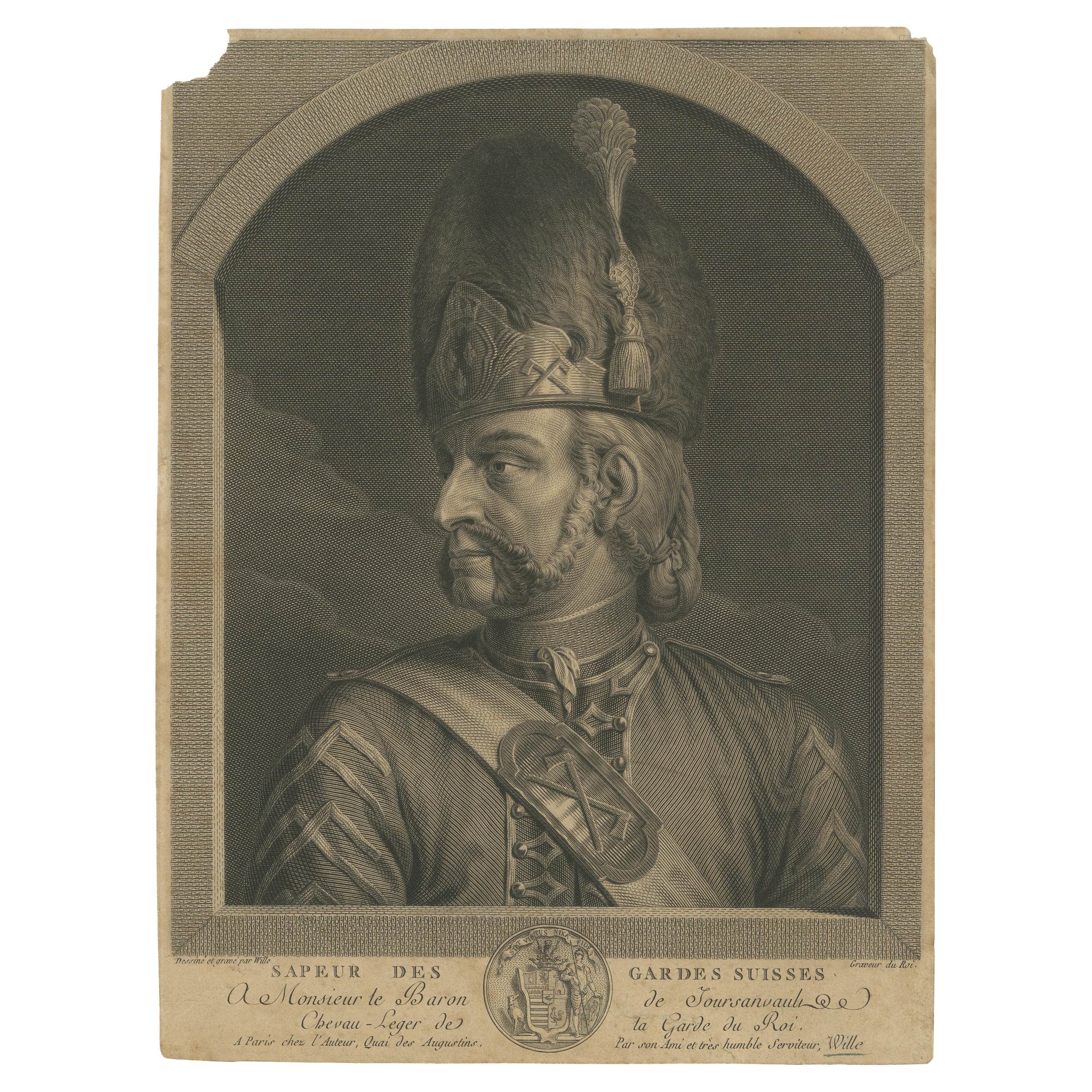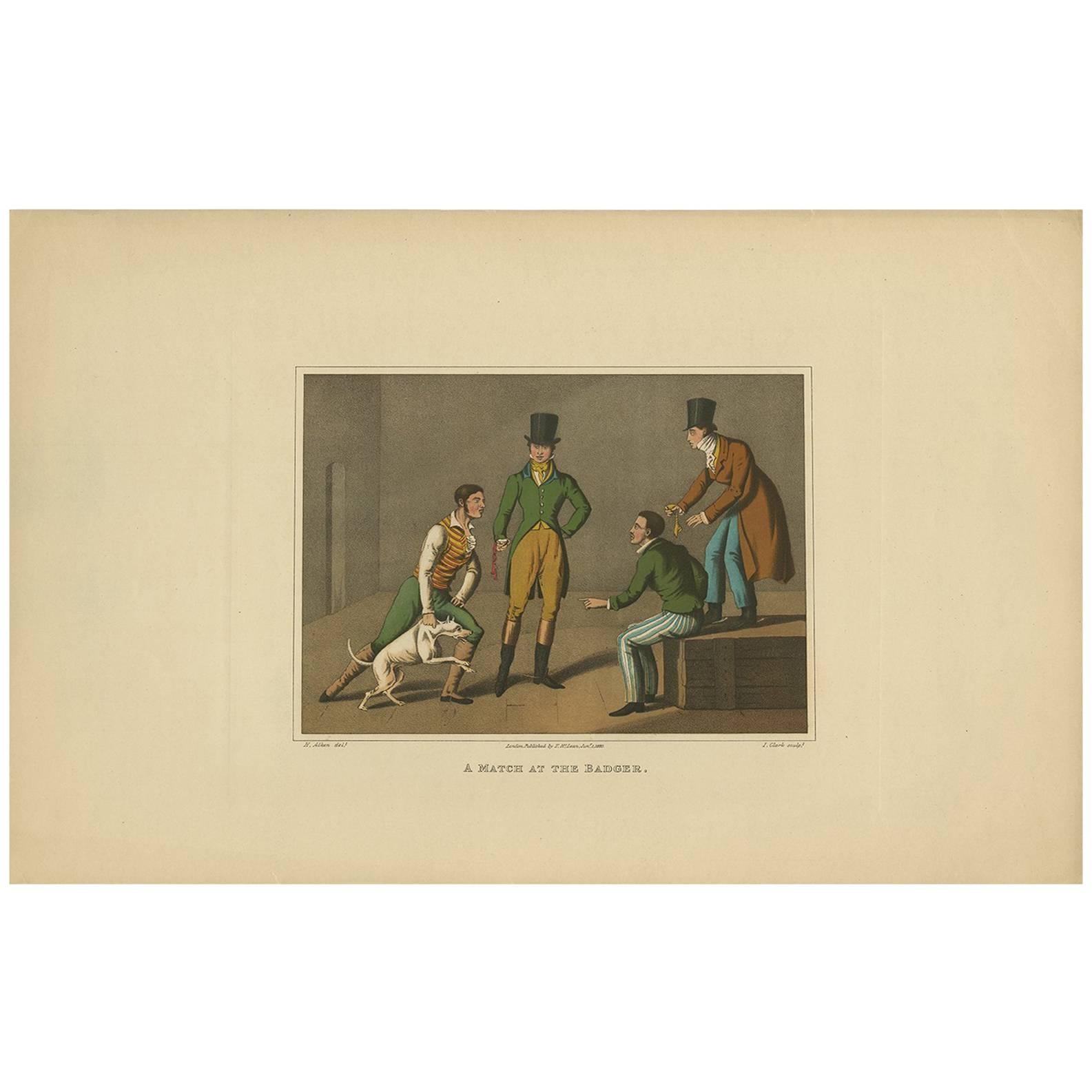Items Similar to 19C Aquatint Engraving of the Quay at Waterford
Want more images or videos?
Request additional images or videos from the seller
1 of 12
19C Aquatint Engraving of the Quay at Waterford
About the Item
Presenting a lovely 19C Aquatint Engraving of the Quay at Waterford in Waterford city in Ireland.
This engraving has been hand embellished with aquatint color(s) and is from Ireland circa 1820-40.
It features a scene of the Quay or Port of Waterford from circa 1820. We are basing this upon the attire of the figures in the engraving and the tall ships.
It features Reginald’s Tower (still located at the Waterford Quay to this day). Georgian Quay buildings, a number of moored tall ships and row boats, barrels, horses and carts, women and British soldiers.
The engraving was professionally reframed and matted in Dallas in the 1980’s and the rear of the frame says that it was “Museum Mounted and Matted”. The frame has a lovely Grecian pattern around the front.
If you are Irish, a Waterford Crystal Collector or have your ancestry from Waterford this is a must have !!
This is a very rare engraving !
The name ‘Waterford’ comes from Old Norse Veðrafjorðr ‘ram (wether) fjord‘. The Irish name is Port Láirge, meaning “Lárag’s port”.[6]
Viking raiders first established a settlement near Waterford in 853. It and all the other longphorts were vacated in 902, the Vikings having been driven out by the native Irish. The Vikings re-established themselves in Ireland at Waterford in 914, led at first by Ottir Iarla (Jarl Ottar) until 917, and after that by Ragnall ua Ímair and the Uí Ímair dynasty, and built what would be Ireland’s first city. Among the most prominent rulers of Waterford was Ivar of Waterford.
In 1167, Diarmait Mac Murchada, the deposed King of Leinster, failed in an attempt to take Waterford. He returned in 1170 with Cambro-Norman mercenaries under Richard de Clare, 2nd Earl of Pembroke (known as Strongbow); together they besieged and took the city after a desperate defence. In furtherance of the Norman invasion of Ireland, King Henry II of England landed at Waterford in 1171. Waterford and then Dublin were declared royal cities, with Dublin also declared capital of Ireland.
Throughout the medieval period, Waterford was Ireland’s second city after Dublin. In the 15th century Waterford repelled two pretenders to the English throne: Lambert Simnel and Perkin Warbeck. As a result, King Henry VII gave the city its motto: Urbs Intacta Manet Waterfordia (Waterford remains the untaken city).
After the Protestant Reformation, Waterford remained a Catholic city and participated in the confederation of Kilkenny – an independent Catholic government from 1642 to 1649. This was ended abruptly by Oliver Cromwell, who brought the country back under English rule; his son-in-law Henry Ireton finally took Waterford in 1650 after a major siege.[7] In 1690, during the Williamite War, the Jacobite Irish Army was forced to surrender Waterford in the wake of the Battle of the Boyne.
The 18th century was a period of huge prosperity for Waterford. Most of the city’s best architecture appeared during this time. A permanent military presence was established in the city with the completion of the Cavalry Barracks at the end of the 18th century.[8]
In the early 19th century, Waterford City was deemed vulnerable and the British government erected three Martello towers on the Hook Peninsula to reinforce the existing Fort at Duncannon. During the 19th century, great industries such as glass making and ship building thrived in the city.
The city was represented in the Parliament of the United Kingdom from 1891 to 1918 by John Redmond MP, leader (from January 1900) of the Irish Parliamentary Party. Redmond, then leader of the pro-Parnell faction of the party, defeated David Sheehy in 1891. In 1911, Br. Jerome Foley, Br. Dunstan Drumm and Br. Leopold Loughran left Waterford for Malvern, Australia. Here, they founded a Catholic college which is still in existence today.[9]
In July 1922, Waterford was the scene of fighting between Irish Free State and Irish Republican troops during the Irish Civil War.
- Dimensions:Height: 13.5 in (34.29 cm)Width: 11.5 in (29.21 cm)Depth: 0.75 in (1.91 cm)
- Style:George III (Of the Period)
- Materials and Techniques:Paper,Engraved
- Place of Origin:
- Period:
- Date of Manufacture:1820-1840
- Condition:Wear consistent with age and use. Very good original condition.
- Seller Location:Dallas, TX
- Reference Number:1stDibs: LU3978126152682
About the Seller
4.9
Gold Seller
These expertly vetted sellers are highly rated and consistently exceed customer expectations.
Established in 2015
1stDibs seller since 2018
349 sales on 1stDibs
Typical response time: <1 hour
- ShippingRetrieving quote...Ships From: Dallas, TX
- Return PolicyA return for this item may be initiated within 7 days of delivery.
More From This SellerView All
- Early 19C Aquatint Engraving of Launcelot by John Frederick Herring SnrBy John Frederick Herring Sr.Located in Dallas, TXPresenting a fabulous and very rare, original early-19th century Chromolithograph Engraving after a painting by John Frederick Herring Snr, engraved by Cha...Category
Antique Mid-19th Century English High Victorian Prints
MaterialsPaper
- 19C Engraving of Lake Gaube in the Pyrenees by T AllomBy Thomas AllomLocated in Dallas, TXPresenting a lovely 19C engraving of Lake Gaube in the Pyrenees by T Allom. From circa 1850. Besautiful depiction of Lake Gaube or Lac de Gaube in the F...Category
Antique Mid-19th Century French Victorian Prints
MaterialsPaper
- 19th Century EAS Douglas Hunt Scene Aquatint EngravingLocated in Dallas, TXPresenting a lovely late 19th century, EAS Douglas hunt scene aquatint engraving. Hand colored and originally painted by Edward Algernon Stuart Douglas (1...Category
Antique Late 19th Century English Victorian Prints
MaterialsPaper
- Early 19th Century Aquatint Engraving of Grey Momus, John Frederick Herring Snr.By John Frederick Herring Sr.Located in Dallas, TXPresenting a fabulous and very rare, original early-19th century chromolithograph engraving after a painting by John Frederick Herring Snr., engraved by Ch...Category
Antique Early 19th Century English Early Victorian Prints
MaterialsPaper
- Set of 6 19C Irish Engraved Prints of Scenes of Dublin by James MaltonLocated in Dallas, TXPRESENTING A FABULOUS AND RARE Set of 6 19C Irish Engraved Prints of Scenes of Dublin by James Malton. Set of 6 VERY RARE AND VALUABLE engraved prints of Dublin, Ireland scenes. These were printed by ‘Cahill Printers Ltd.’ circa 1880-1900. ‘Cahill Printers Ltd’ have been in existence since 1866 and acquired the rights to print these copies of the original watercolors by James Malton (1761 – 1803). Set of 6 19C Irish Engraved Prints of Scenes of Dublin by James Malton These scenes are: (in order): Rotunda & New Rooms, Great Court Yard Dublin Castle...Category
Antique Late 19th Century Irish George II Prints
MaterialsWood, Paper
- 19 Century Engraving of St. Giles by J.F. Herring SnrBy John Frederick Herring Sr.Located in Dallas, TXPresenting a fabulous and very rare, original early 19th century engraving after a painting by John Frederick Herring Snr……engraved by Charles Hunt, circa ...Category
Antique Early 19th Century English Early Victorian Prints
MaterialsPaper
You May Also Like
- Copper Engraving of a Sapper of the Swiss Guards at the Vatican, 1779Located in Langweer, NLThis original print is Johann Georg Wille's copper engraving of a Sappeur of the Swiss Guard from 1779. Wille was a notable artist and engraver known for his portraits and engravings during the 18th century. The piece depicts a half-length portrait of a soldier in the uniform of the Swiss Guard, likely in service in Italy, perhaps even in Rome, given the connection of the Swiss Guard with the Vatican. The soldier is portrayed as a sapper or pioneer, carrying out specialized military tasks. The dimensions of the paper and the technique used (copper engraving on paper) give a sense of the physical aspects of the artwork. The condition report indicates some minor damage but an overall good state, with some restoration work done. It's fascinating how historical artworks like this engraving can provide insights into military attire, cultural connections, and artistic techniques of the time. More details: Johann Georg Wille (1715 Königsberg, Giessen - 1808 Paris): "Sapeur des gardes suisses" Portrait of a man wearing a feather-trimmed fur hat and a sash worn over his uniform, breast piece with profile to the left, 1779. Technique: Copper engraving on Paper Inscription: At the lower part signed in the printing plate: "Dessine et gravé par Wille Graveur du Roi". At the lower part inscribed in the printing plate: "SAPEUR DES GARDES SUISSES ...". Keywords: Soldier; Uniform; Man; Soldier portrait...Category
Antique Late 18th Century Prints
MaterialsPaper
- 18th C Hand Colored Engraving of The Rotunda at Ranleagh Gardens After CanalettoBy Giovanni Antonio Canal (Canaletto)Located in Stamford, CTAn inside View of the Rotundo in Ranelagh Gardens, after Antonio Canaletto (1697 - 1768). Engraved by by Thomas Bowles, 1754. Hand colored engraving, in original ebonized frame with...Category
Antique Mid-18th Century English George II Prints
MaterialsPaper
- Antique Aquatint 'A Match at the Badger' by J. Clark, 1820Located in Langweer, NLHandcolored aquatint made after Henry Alken by J. Clark. Published by T. McLean, London, 1820. The antique aquatint titled 'A Match at the Badger' by J. Clark likely portrays a scen...Category
Antique Early 19th Century Prints
MaterialsPaper
- Mourning the Chief: Engraving of The Morai at Otaheite, now called Tahiti, 1817Located in Langweer, NLAn original historical engraving from G. Alexander Cooke's "Geography," published in 1817. The engraving is titled "View of a Tuppapon or Shed under which the Bodies of the Chiefs of...Category
Antique 1810s Prints
MaterialsPaper
- 19th C Engraving of the City of Bergamo, ItalyLocated in Sheffield, MAA fine engraving of the ancient City of Bergamo depicting its architecture and historical places of interest. Nicely matted and framed. Search term: art, painting. lithograph.Category
Antique Late 19th Century Italian Prints
MaterialsPaper
- The First of September "Morning" Engraving, 1799Located in Carmel, CAMezzotint engraving, 1799, The First of September, after painting by George Moreland. Moreland was a noted London landscape and genre painter. By the...Category
Antique 1790s English Georgian Prints
MaterialsPaper
Recently Viewed
View AllMore Ways To Browse
Chinese Black China Cabinet
French Gold Medallion
Counter Cabinet
1970s Clothes
Brown Vintage Shoes
Antique Victorian Kitchen Cabinets
Enamel Signed Plate
Antique Narrow Cabinet
Narrow Antique Cabinet
Antique Long Box
1960s Art Nouveau
Kitchen Apron
Chinese Style Cabinets
Gilded Wood Cabinet
Storage Small Cabinet With Sliding Doors
Italian Display Cabinet
Found Object Jewelry
Antique Cabinet Gold
